One of the things that confused me to no end before we started traveling was how to ensure we’d have consistent phone/data access for staying in touch with friends and family, as well as navigating two-factor authentication. I spent a lot of time combing through posts and asking questions in forums to weigh our options. Others do the same. That’s because it’s not a simple as: Buy a plan and use it anywhere.
Essentially, our options as we understood them then roughly fell into these buckets:
Port our number to Google Voice or Number Barn or another similar provider to ensure we keep our US phone numbers; this has a fairly nominal fee (all things considered). Then either pay for Skype or another VOIP provider where you can use your ported US number OR pay for Google Fi to get international service/signal. The tricky part is that Google Fi has started cutting off service after 3 months abroad. Solution: Purchase a local/regional eSIM and toggle between a US profile and a global one (see below).
Switch to a US carrier that offers an international plan so that your phone works no matter where in the world you go (supposedly). This is the most expensive option but it theoretically is the most seamless. However, we’ve heard they can also cut off your service if you’re out of the US for too long. Solution: Purchase a local/regional eSIM and toggle between the US profile and a global one (see below) to try to stay below the radar.
Switch to a low-cost carrier, like Mint, to keep your US number and access your phone and data via wifi anywhere in the world. This is quite cost effective but means that if you don’t have wifi, you can’t use your phone. Solution: Purchase a local/regional eSIM and toggle between the US profile and a global one (see below).
The bottom line is that this is a complex issue and everyone has a slightly different experience and set of needs. Also, options in the market keep changing. We ended up going with option 2 and getting T-Mobile accounts with a global plan; we’ll call this our US profile. We use this as needed, especially when we first arrive in a new country. In fact, we used this exclusively in Europe because we hadn’t yet figured out yet how to get eSIMs. (We explored them through Vodafone, but it required going into a store, and the first store was out of them. Yeah, don’t ask, but it was true. We waited an age at another store only to discover that the cost for the coverage didn’t make sense.)
Once we left Europe, though, we were six weeks into our travels and wanted to reduce the data we were using through our US plan (so as not to get cut off, hopefully), so we finally figured out a remote eSIM through Airalo, which is sort of a broker that provides pay-as-you go access to local cell networks. You purchase the amount of data you want for a certain period of time (e.g., 2GB for 7 days, 5GB for 14 days) and you have access to it until either you’ve used all the data or the time period runs out.
The downside to an eSIM is that it’s data only; there's no local number associated with it, so we can't text via SMS (the exception is iPhones, which can still message other iPhone users because the protocol is different from SMS). So to get around this, we use WhatsApp for messaging, as this works via the eSIM data. In fact, pretty much everywhere outside of the US uses WhatsApp for messaging anyway, including businesses—and thank goodness because that’s how I’m able to contact businesses as we travel. Without a local number, I can’t make locals calls, but WhatsApp solves all of that; it’s pretty amazing, actually. We set up our WhatsApp profiles with our US numbers but don’t have to use US data to call or message local businesses and providers, assuming they’re also on WhatsApp (and many are).
Now, there are times we’re out and about and we need to receive a US text (e.g., for two-factor authentication). In that case, we toggle off our non-US profile and toggle on our US profile; it just takes a few seconds. When we’re done, we switch back, although it’s not a big deal if we forget. It's a bit confusing to explain and it probably sounds like a hassle, but it has been a good solution so far. Knock on wood this keeps working.
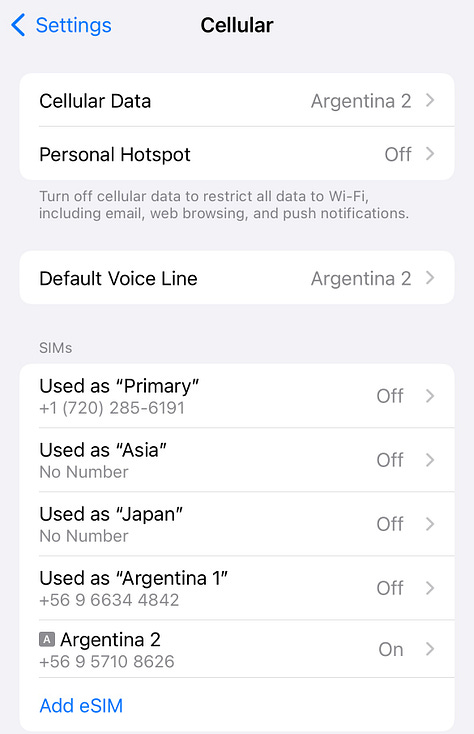
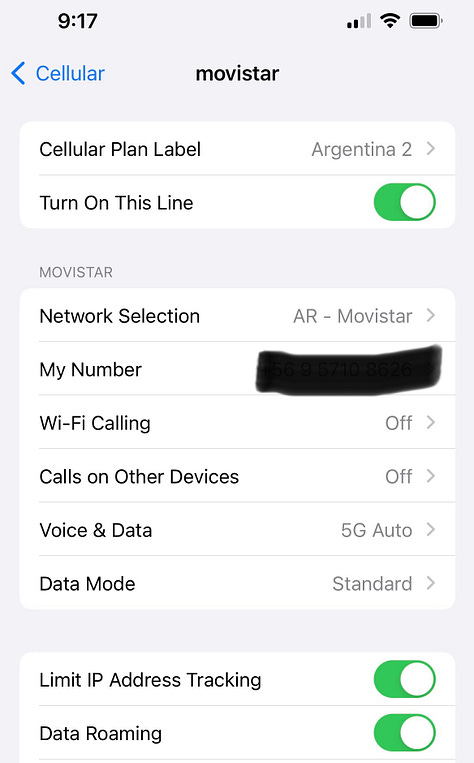

We do still use our US profile, mostly at “home” via wifi, as this lets us text and call anyone we want in the US. But when we're out and about, we mostly turn the US profile off and use the local data pack from our eSIM. Of course, there are times when the local data doesn’t work well, for any number of reasons. In those cases, it’s quite nice to simply toggle back to our US profiles and use that data. Basically, we’ve got options.
There are other global eSIM providers beyond Airalo, as well as many local cell providers like Vodafone in Spain who sell eSIMs and even physical SIMs, but with local providers you usually have to go into a store to set things up. With Airalo, it’s all virtual, so long as you have access to stable Internet (e.g., via wifi), you can install a new eSIM anywhere, even while super sleep deprived at the Singapore airport at 6am. (Ask me how I know, LOL.)
Regardlesss of which provider you use, the eSIM has to be set up for each phone, and it’s key that you have an eSIM-compatible phone. Natasha’s is not, unfortunately, but she doesn’t need to use a lot of data while we’re out, so she just keeps her US profile on. In Asia we bought regional eSIMs that worked across multiple countries since we were hopping around. We could easily track our data usage and then top up when data got low. Toward the end I purchased a Japan-only eSIM since it ended up being cheaper.
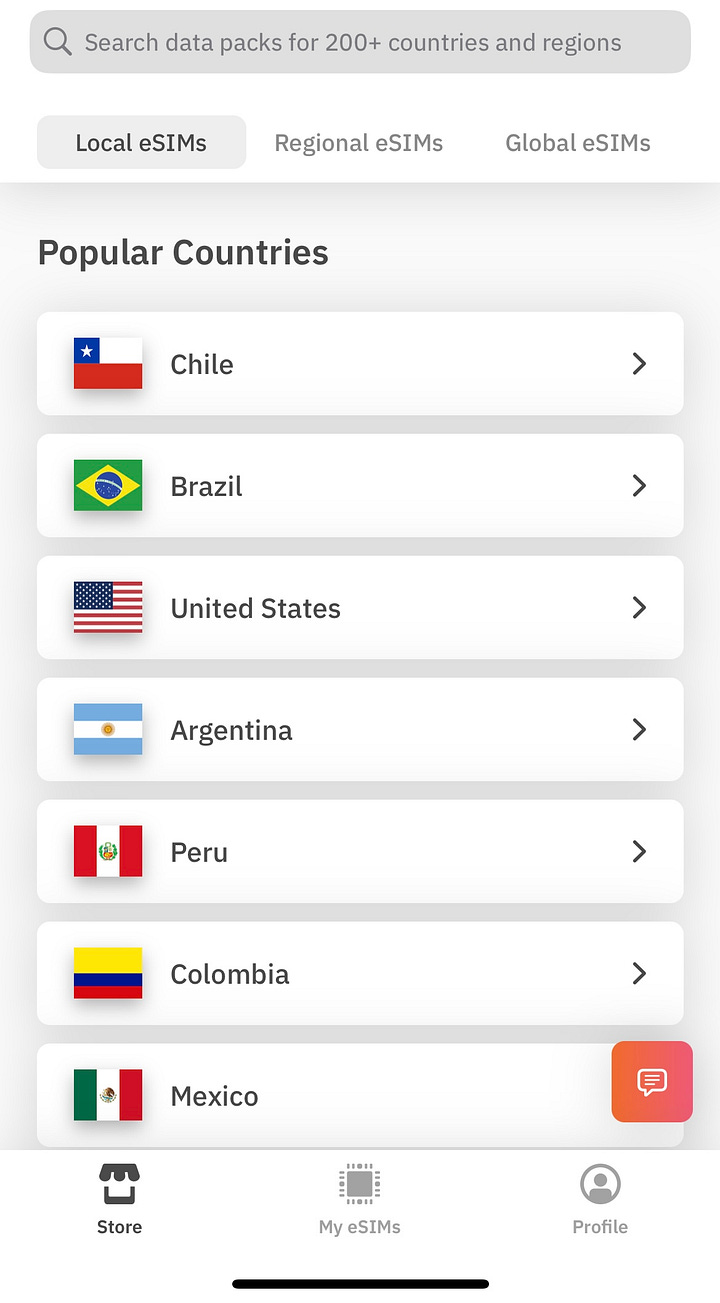
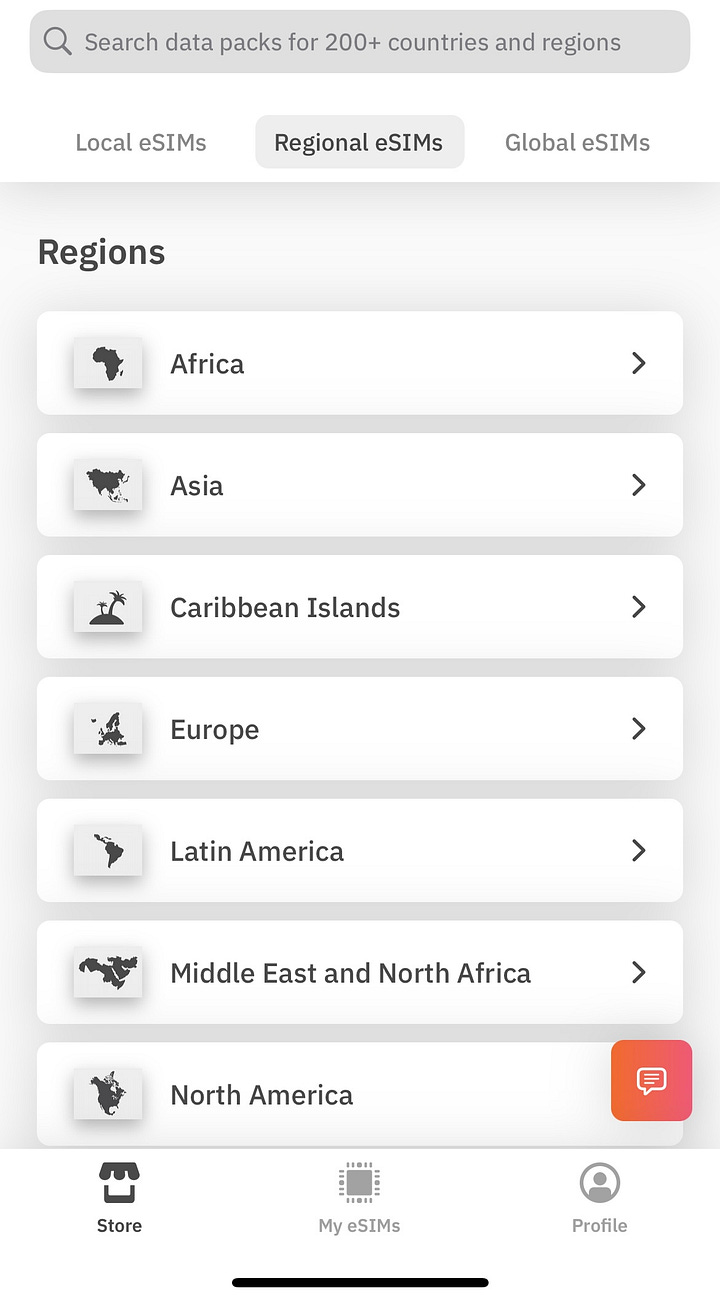
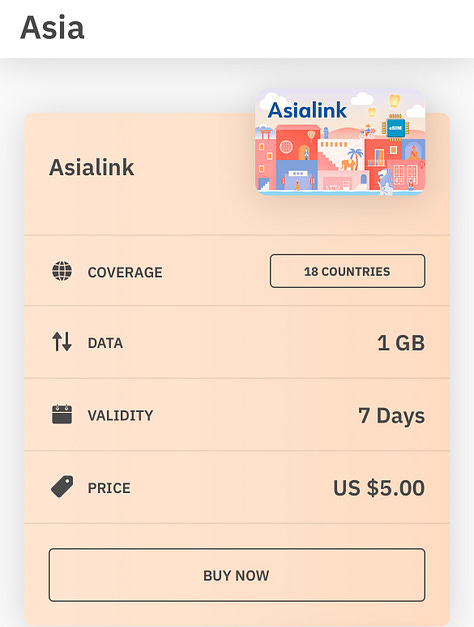
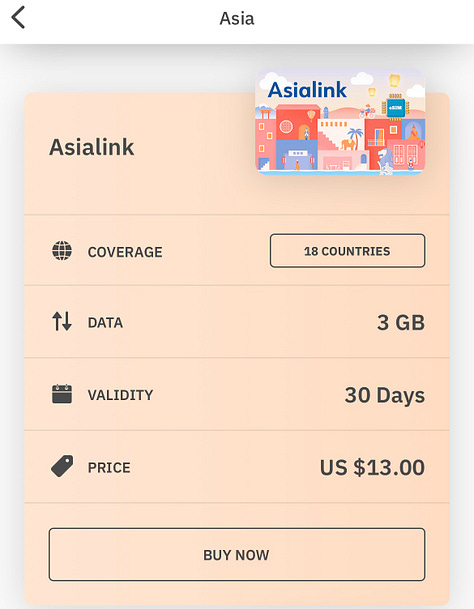
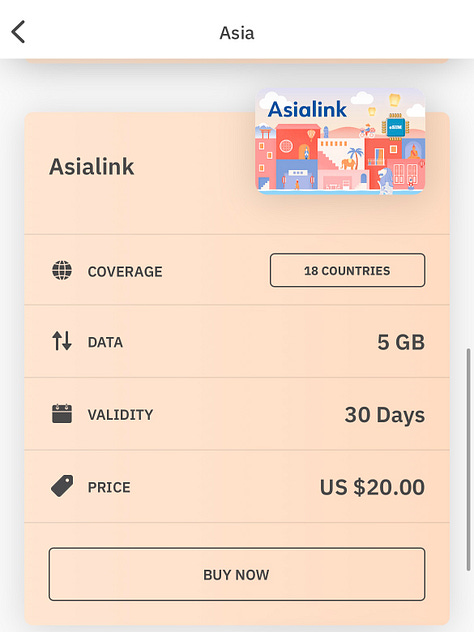
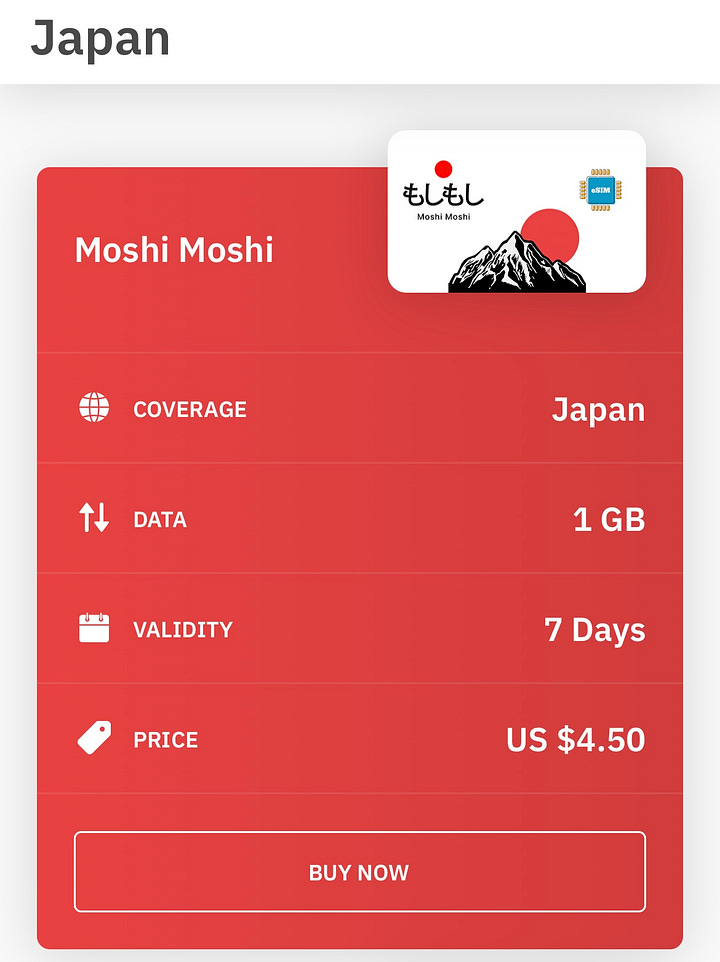
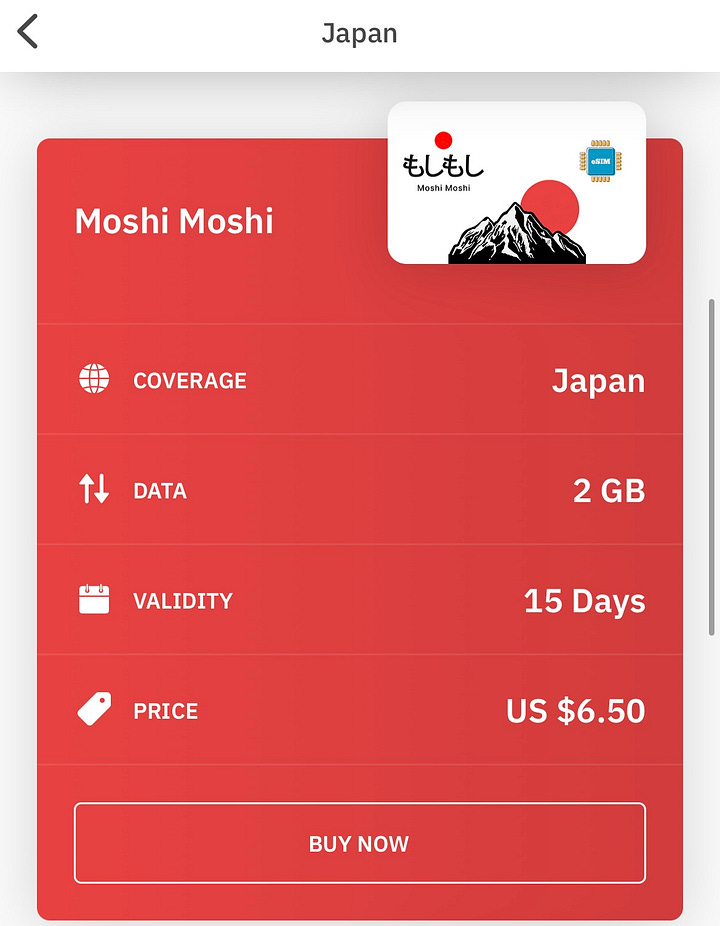
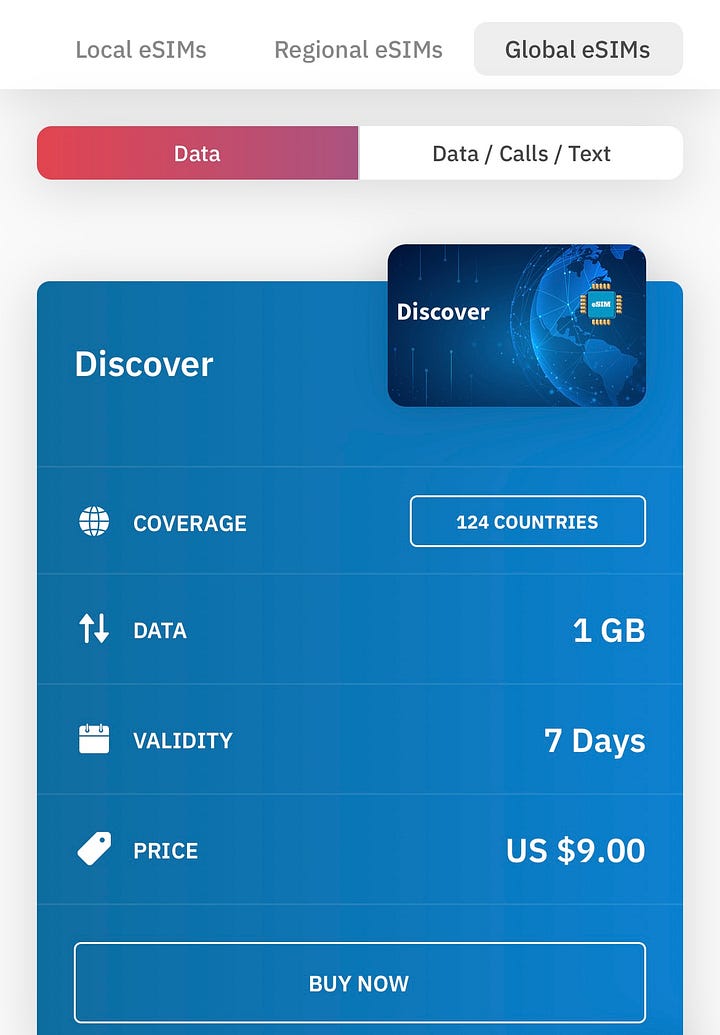
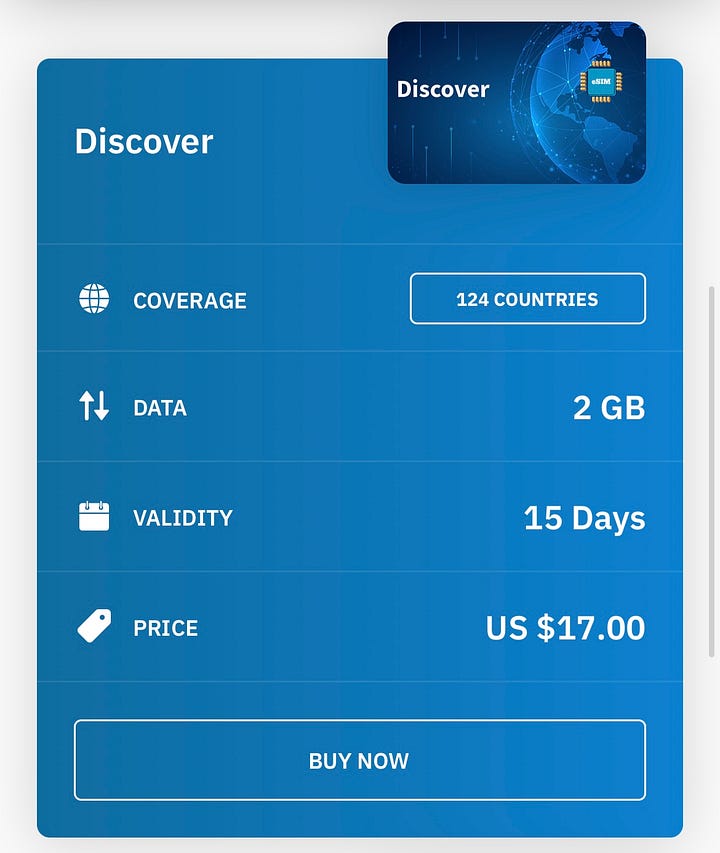
We’ve discovered in Argentina that we can’t top up our Airalo eSIMs, though, nor can we track our data usage. I have no idea why it’s so different; it’s frustrating because once either the data runs out or the time period ends, we have to install a whole new eSIM. It’s not horrible, but it’s more convoluted than when we were in Asia. I may explore a different eSIM provider to see if it’s better for Latin America.
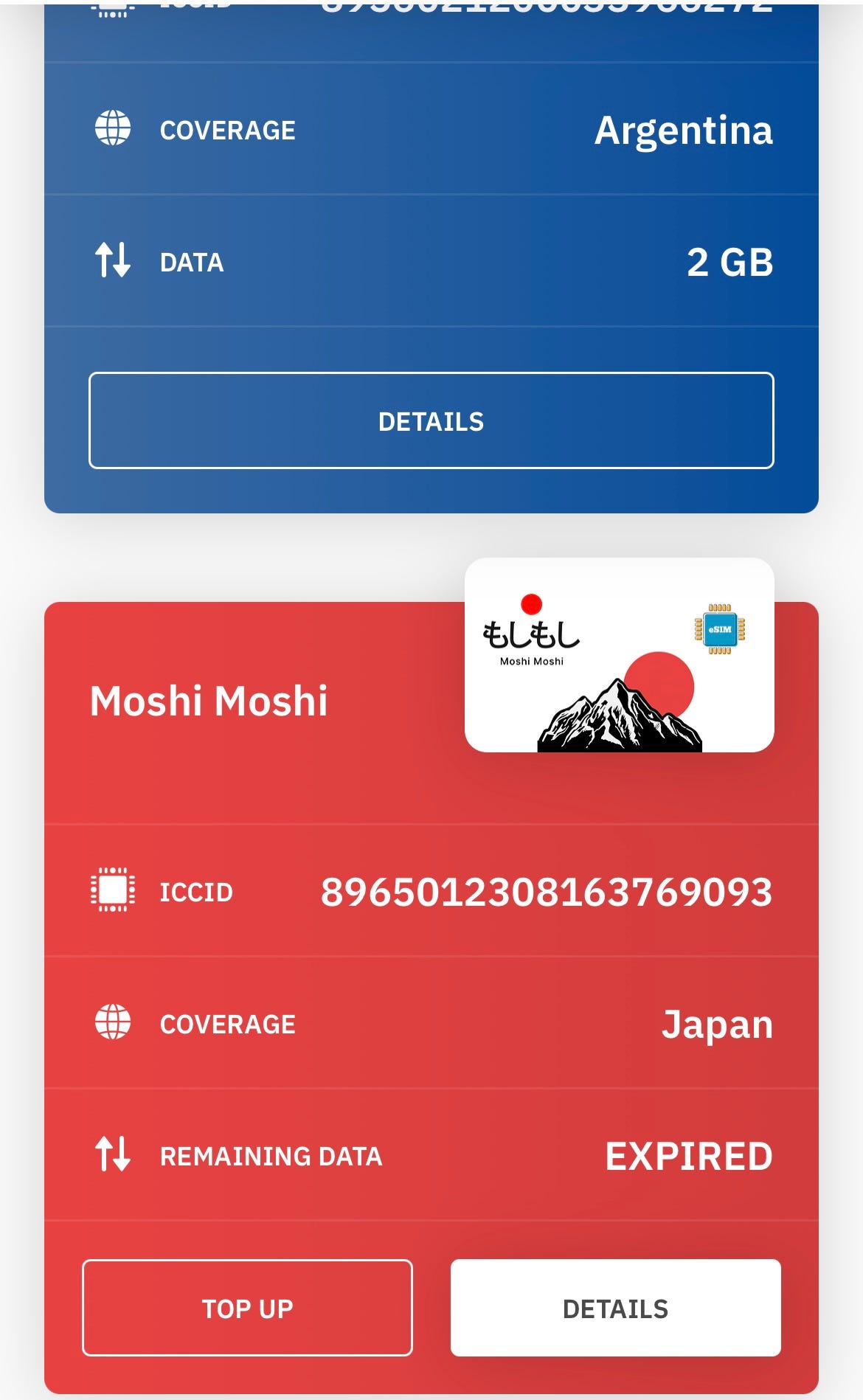
You may be wondering why Google Fi and other US providers have started cutting people off if we’re paying for international plans. To be clear, the contract language states that the plans are meant predominantly for use in the US with access internationally as you travel, ostensibly for business or vacation (i.e., not full-time, endless travel outside of the US). It didn’t used to be this way, and I can only speculate as to what changed, but I’d guess it comes down to profit. I think they have agreements with network providers around the world that they pay money to for piggybacking off their cell towers and networks. If we only use these international roaming networks, the US companies probably aren’t making as much of a margin of us. Just a guess, though.
Anyway, for now we are well covered. We’ll see as we continue to travel how well this serves us and whether we need to adjust. My guess is that we’ll make a change at some point, but we’re not in need of that yet.
Just for grins and perspective, remember this? Long distance phone calls cost extra. What a long way we’ve come.




